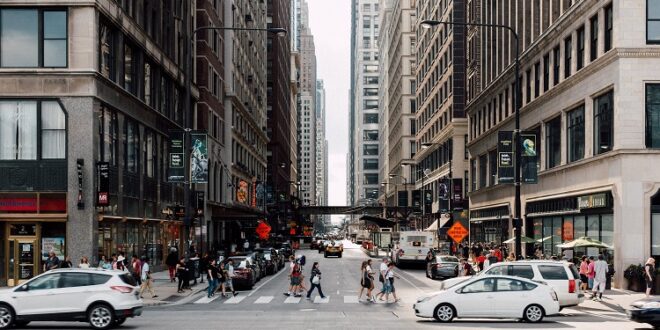Edmonton, a vibrant city in the heart of Alberta, Canada, is known for its rich cultural tapestry, stunning landscapes, and thriving urban environment. However, amidst the hustle and bustle of city life, a pressing concern demands our attention: pedestrian safety.
As the city continues to grow and evolve, so do the challenges those who navigate its streets on foot face. In this article, we delve into the pedestrian safety challenges in Edmonton, examining the factors contributing to these issues and proposing potential solutions.
Current State of Pedestrian Safety
The number of pedestrian fatalities in Edmonton has been on the rise since 2014, and it’s essential to understand why. As stated by Global News, 34 pedestrians have faced severe injuries due to crashes with vehicles as of October 2023. It has led to at least 20 deaths.
The first step toward understanding these trends is to look at what’s happening elsewhere. Other cities with demographics and populations similar to Edmonton have experienced similar increases in pedestrian fatalities.
It’s also important to look at what happened in previous years and why these changes have occurred. This will help identify where additional resources or improvements are needed.
The good news is that steps are already being taken for pedestrian safety. Funds from the Traffic Safety Automated Enforcement Reserve (TSAER) are utilized by the City of Edmonton’s Safe Crossings Program to improve crossing safety. The initiative is a component of the 2021–2025 Safe Mobility Strategy. The City of Edmonton website states that over 375 crossings have undergone upgrades since 2015.
Contributing Factors
Pedestrian accidents can result from various factors, often involving interactions between pedestrians, drivers, and the environment. Here are some contributing factors to pedestrian accidents:
- Distracted walking: Pedestrians using smartphones or other electronic devices while walking may be less aware of their surroundings, increasing the risk of accidents.
- Distracted driving: Drivers distracted by texting, talking on the phone, or engaging in other activities may not be fully attentive to pedestrians.
- Speeding: Higher vehicle speeds reduce the time available for drivers to react to pedestrians and increase the severity of injuries if a collision occurs.
- Crosswalk violations: Pedestrians jaywalking or crossing roads outside designated crosswalks and drivers failing to yield to pedestrians in crosswalks contribute to accidents.
- Poor visibility: Inadequate street lighting, bad weather conditions, and obstructions to visibility can reduce the ability of both pedestrians and drivers to see each other.
- Impaired driving or walking: Alcohol or drug impairment can significantly affect the judgment and coordination of both pedestrians and drivers, increasing the likelihood of accidents.
- Inadequate infrastructure: Poorly designed or maintained crosswalks, lack of sidewalks, and insufficient pedestrian signage contribute to unsafe pedestrian conditions.
- Driver inattention or fatigue: Drivers who are tired or not paying attention may not notice pedestrians, especially in busy urban areas or at intersections.
- Reckless driving: Aggressive or reckless driving behaviors like running red lights or ignoring stop signs can put pedestrians at risk.
- Poor road conditions: Uneven or poorly maintained road surfaces and construction zones can pose hazards for pedestrians and drivers alike.
- Lack of pedestrian education: Insufficient awareness and education about pedestrian safety may contribute to risky behaviors by both pedestrians and drivers.
As you can see, accidents can result from anyone’s fault. It can be the drivers, pedestrians, weather, or machinery malfunction. If the accident is your fault, then there’s no one else to blame for it. However, if the accident is because of the driver’s negligence, you can hire a lawyer in Edmonton and file a case.
According to Moustarah & Company, accidents can affect physical, mental, and emotional health. You might also have to seek medical treatment, which can be costly. These damages can even lead to financial problems if you cannot go to work due to injuries. Hence, filing a lawsuit and getting the right compensation is vital.
You can hire an Edmonton personal injury lawyer who has previously worked on such lawsuits. The experience will ensure that the attorney can help you win the case. It will also ensure that he or she can negotiate appropriately with the insurance company on your behalf.
City Initiatives and Policies
The City of Edmonton has taken numerous initiatives to improve pedestrian safety. One of these is the Safe Crossings Program, discussed earlier. In this program, the city has improved its crossings for the safety of pedestrians.
Another initiative is the Vision Zero. The government aims to reduce traffic-related injuries and fatalities by 2032 through this program. This also includes injuries and fatalities of pedestrians. Even the speed limit has been reduced from 50 km/h to 40 km/h.
According to the Edmonton Journal, one of the recent and most-debated discussions revolve around making 102 Avenue car-free. The UDI-Edmonton Metro and Paths for People have joined hands to explore ways to make the area pedestrian-friendly. This has led to the drafting of the Downtown Pedestrianization Plan, which is awaiting further inputs in December 2023.
Future Outlook
The future outlook for pedestrian safety is promising. The City of Edmonton has begun to take steps towards improving the overall road environment. However, many challenges still need to be addressed before the streets are safe for everyone using them.
An obstacle lies within Edmonton’s current transportation hierarchy. Despite having several high-volume transit corridors running through its downtown core, this remains a primarily auto-oriented city. That’s why only a few people choose buses, or LRT trains over cars: they simply don’t feel safe.
However, things are changing now with improvements in public transport experiences. According to the Mass Transit magazine, Edmonton’s bus ridership was around 1.2 million weekly riders in January 2023. This is almost 100% of 2019 pre-pandemic levels.
Several key strategies can shape the future of pedestrian safety in Edmonton. For instance, integrating smart city technologies holds immense potential for improving pedestrian safety. Implementing intelligent traffic management systems, pedestrian detection sensors, and real-time communication tools can enhance the overall safety infrastructure.
In conclusion, pedestrian safety in Edmonton has become a priority for the city and its citizens. With several initiatives, Edmontonians are taking steps towards making their streets safer for everyone who uses them. We hope this article has provided insight into how these issues affect our community and what’s being done about them.
 HammBurg Be informed with latest news, reviews, entertainment, lifestyle tips, and much more.
HammBurg Be informed with latest news, reviews, entertainment, lifestyle tips, and much more.



